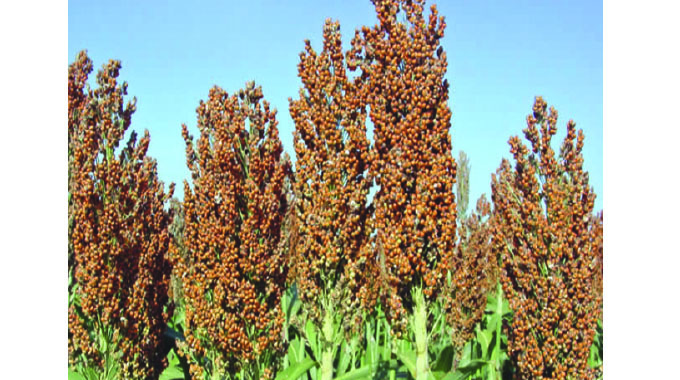Some traditional crops on verge of extinction

Elita Chikwati, Harare Bureau
SOME traditional crops are on the verge of extinction as smallholder farmers who used to be the major producers have turned to other high value crops grown under contract farming.
Maize has also become popular among many farmers even those in dry areas despite the fact that these traditional crops are highly nutritious and also perform well under dry conditions.
Maize and other cash crops are now being produced at a large scale while traditional crops are grown by few at a small scale.
The value attached to traditional crops is low.
Crops such as pearl millet, rapoko and some varieties of groundnuts and roundnuts are now extinct in some areas as only a few smallholder farmers are still producing them.
This has been caused by lack of knowledge on the nutritional value of the traditional crops, unviable markets and difficulties in processing when people want to prepare the food.
Farmers in Bubi, Matabeleland North have started promoting the production of traditional crops with assistance from the Zimbabwe Resilience Building Fund under the Matabeleland Enhanced Livelihoods, Agriculture and Nutrition Adaptation (MELANA) project.
The farmers in Majiji, Ward 4, were abandoning traditional crops for maize and in most cases the crop was affected by drought leading many into household food and nutrition insecurity.
Through interventions from the ZRBF-MELANA, farmers in Bubi have responded to that threat and ensure the preservation, of traditional plant genetic materials by setting up a seedbank.
Preservation is being achieved through identification and multiplication of traditional plant genetic materials at risk (seed which is nearing extinction) and reintroduction or revival of lost crops (seed which used to be planted in the ward but is no longer available) for multiplication by farmers trained under the Farmer Field School (FFS) approach.
Farmers with unique seed (lost crops and or those reaching extinction) have an opportunity to stock their seed with the seed bank and they can withdraw it at the time of planting leaving some in the seed bank to allow for replanting in the event of poor crop emergency/performance.
The seed bank is therefore a risk management instrument available to ensure perpetuation of traditional plant genetic materials.
The seed bank is run by a management committee. The committee receives, treat and store seed from farmers. They also facilitate seed withdrawals by farmers.
The seed bank has a current membership of 84 subscribed members.
Seed types currently in the seed bank include maize, pearl millet, sorghum, finger millet, groundnuts, cowpeas, bambara nuts, sunflower, pumpkin, watermelon, cow-melon and fodder — velvet bean among other crop types.
All these traditional plant materials are of many different varieties.
Under the MELANA project, farmers have also acquired threshers that help to process the crops and this has seen an increase in the production of these traditional crops.
Bubi farmer, Mrs Oripa Machokoto said some farmers were more interested in growing cash crops under contract because there was a ready market.
“Most young people no longer enjoy traditional food and opt for maize than rapoko or millet.
“We have realised that traditional foods are healthier and can do well under dry condition. We are processing traditional crops without difficulties because of the sheller. It was labour intensive to process manually,” she said.
Mrs Nothando Dube, farmer said she had benefited a lot under the ZRBF MELANA project.
“We now have a seedbank where we can store our retained seed properly for use during the following season. The seed is safe from rodents for pests.
“We are guaranteed of seed every season even when we have no access to hybrid seed. The seedbank is nearer and easily accessible,” she said.

Sorghum heads
Bubi Agritex officer, Ms Khetiwe Mpofu said traditional crop varieties were facing extinction and the establishment of the seedbank will go a long way in preserving the seed.
“The seed bank will enable farmers to handle seed properly. In some cases, farmers would select their seed but due to lack of proper post-harvest handling techniques, the seed was affected by pests.
“We are encouraging farmers to produce different crops and varieties to spread the risks. Climate change was also affecting production of these crops and the seed bank was a response to the phenomena,” he said.
“Growing the same crops every year will lead to hunger and malnutrition especially when produced on large area and it fails,” she said.
ZRBF MELANA field officer, Mr Tedious Mhute said before the seedbank some households faced hunger because they did not have seed.
Now people have easy access to seed and this has made those who used to be insecure have enough food.
“Now they can store their seed in the bank and when the times comes they just collect it,” he said.
Government is also promoting the production of traditional grains by offering viable prices for the crop.
The Grain Marketing Board is now buying traditional grains.
GMB buys maize at $58 553 per tonne and traditional grains at $ $70 263 90 per tonne.












Comments